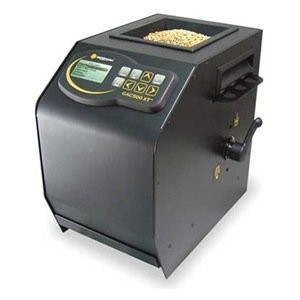Every person engaged in agriculture should know that proper application of a Grain Moisture Meter is significant for grain harvesting and drying as well as for storage and competitiveness at the market. Inaccurate readings lead to undesirable effects. For instance, it may lead to increased drying charges, grain quality below existing market standards, complete grain spoilage or its high losses if you harvest grain when it is too wet, etc. To avoid such consequences and have exact readings, you should obtain a representative sample and get a grain moisture tester after learning a proper guide. Do not forget that accurate readings directly depend on a Grain Moisture Meter calibration.

Grain Sampling
How to obtain a representative grain sample? There are several ways how to do it. If you want to conduct sampling before grain harvesting, you should know that it is quite difficult. Moisture content of growing crop may be underestimated. Random check of some field areas will help to determine average moisture content. Mix samples and take several readings using a Grain Moisture Tester. It also should be mentioned that some testers may show not very accurate results if moisture level is more than 22-25%; therefore, 3-4 points may be added for final readings. While grain load sampling, it is wrong to test only the grain that is on top.
It is recommended to take samples at least from two different locations but avoid the corners and center. You can also probe flowing grain during the process of unloading. A Grain Moisture Meter can also be used in bin sampling. To check the moisture content of grain, you should obtain samples from different depths. Try to go very deep or detect trouble spots. Test obtained samples separately – if you evaluate the content of moisture in different location, you will be able to make better marketing decisions.
Tips To Get A Grain Moisture Tester
Before Grain Moisture Tester application make sure that the battery is charged and in good condition. To enhance work performance of a Grain Moisture Meter, remove its battery during idle periods. Troubles with a battery lead to inaccurate readings.
The grain moisture tester equipment are highly sophisticated and are simple to use giving direct reading of all commodities to check the moisture level in them. Similarly, the mini paddy husker is very useful for the farmers to DE husk the shell of rice grains making them ready for market selling. With this machine small farmers can avoid approaching big commercial rice processing plants and can have control on their products and process them in low prices.
Get Seed Grader With Grain Moisture Tester For Better Performance
Similarly, seed grader too is very useful with the equipment being small and can be easily carried without efforts to the work place. The seed graders help farmers in distinguishing impurities and unwanted seeds as they pass through the machine in different levels before quality seeds are separated from the rest.
Other products like seed germinators, seed testing equipment are highly appreciated by the farmers as they can enhance their harvests using these machines.
